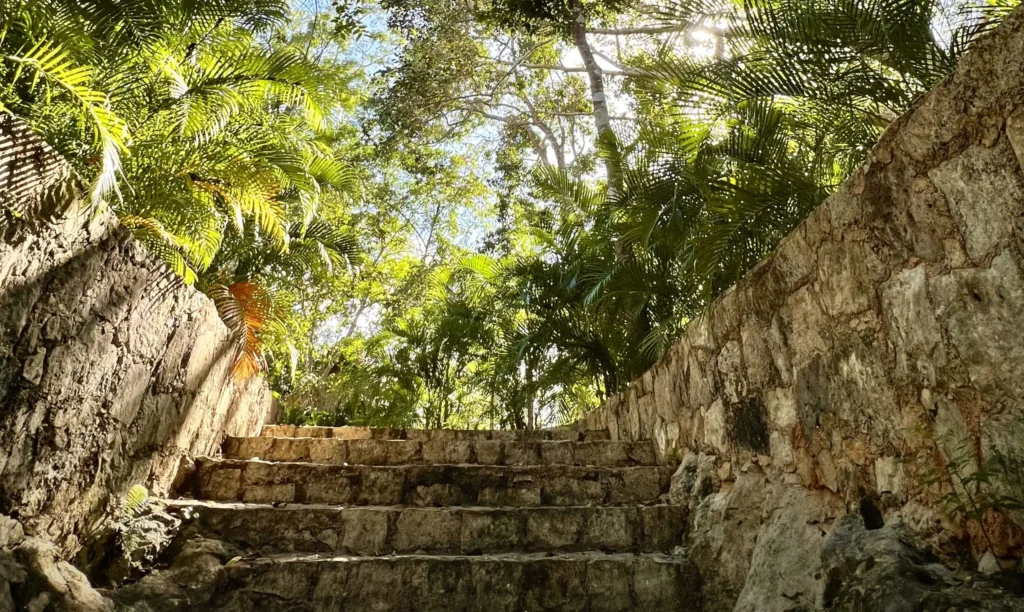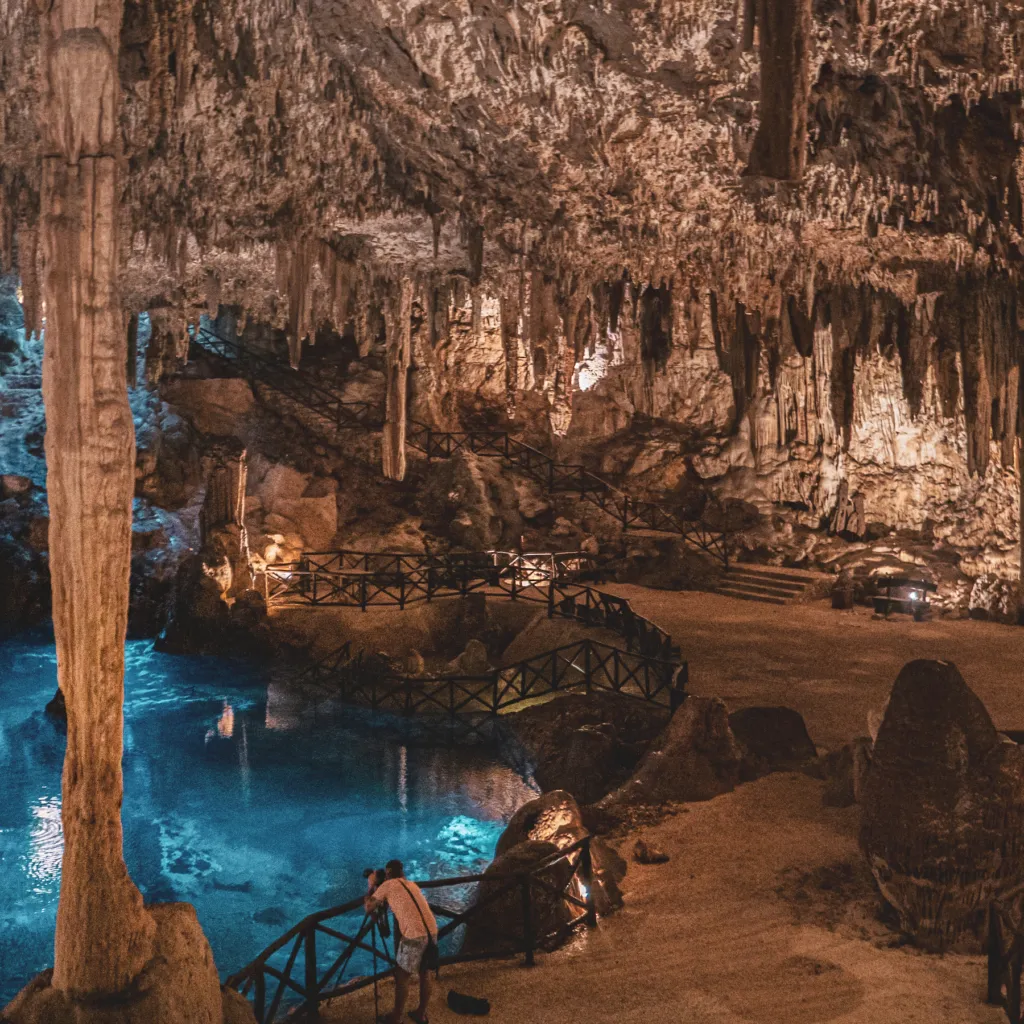Sumérgete en un oasis secreto en el corazón de la península de Yucatán. El Cenote Zazil Tunich, más que una simple caverna inundada, es un jardín subterráneo que alberga una sorprendente diversidad de vida vegetal, un espectáculo natural que te dejará sin aliento.

Imagina descender por una escalera de piedra, sintiendo la humedad en el aire y escuchando el goteo del agua. A medida que te adentras en las profundidades, la luz del sol se filtra a través de las aberturas en el techo, creando un juego de luces y sombras que baila sobre las paredes del cenote.
Ante tus ojos se despliega un espectáculo de vida vegetal que te dejará sin aliento. Raíces de árboles, como serpientes que buscan el agua, se entrelazan en las paredes, formando un tapiz verde que contrasta con la roca caliza. Helechos, con sus hojas delicadas, se aferran a las grietas, mientras que musgos y líquenes tapizan las superficies, creando un ambiente húmedo y misterioso.
Pero lo más sorprendente son las orquídeas. Estas flores exóticas, que normalmente asociamos con la luz del sol y el aire libre, han encontrado aquí un hogar inesperado. Sus colores vibrantes, desde el blanco puro hasta el morado intenso, iluminan la oscuridad y crean un espectáculo de belleza inigualable.
Cada planta en este jardín subterráneo tiene una historia que contar, una adaptación única que le permite sobrevivir en este entorno extremo. Las raíces de los árboles, además de buscar agua, filtran el aire y crean un hábitat para una gran variedad de microorganismos. Los helechos y musgos ayudan a mantener la humedad del ambiente, mientras que las orquídeas atraen a los polinizadores que aseguran la reproducción de las plantas.
Explorar Zazil Tunich es como adentrarse en un laboratorio de la naturaleza, donde puedes observar de cerca cómo las plantas han evolucionado para adaptarse a la vida en la oscuridad. Es una experiencia que despertará tu curiosidad y te conectará con la magia de la vida en su forma más pura.
No te pierdas la oportunidad de descubrir este tesoro escondido en las profundidades de la tierra. Visita Zazil Tunich y déjate sorprender por la belleza y la diversidad de su jardín subterráneo. Sumérgete en sus aguas cristalinas, admira las formaciones rocosas y aprende sobre la importancia de conservar este ecosistema único.

$ 32,000
/ por persona

From: $ 25,000
/ por persona

$ 22,000
/ por persona

$ 19,000
/ por persona

$ 14,000
/ por persona

From: $ 1,799
/ por persona

Share:
Today I want to take you to a magical world full of mystery, where legends come to life and ancient tales...

Share:
Hanal Pixán, which in Mayan means ‘food of the souls’, is one of the most emblematic and profound festivities of...

Share:
The Mayan culture, rich in symbolism and tradition, has bequeathed to the world a series of ancestral practices and knowledge that...

